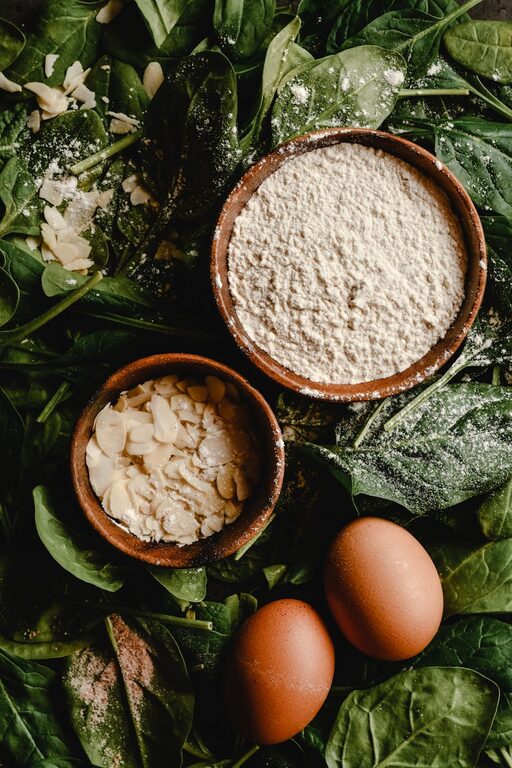Planning meals around pantry staples is a smart way to save time, reduce food waste, and make cooking less stressful. Whether you’re new to meal planning or looking to simplify your routine, using what’s already in your pantry can inspire creative and tasty meals. In this post, we’ll share practical tips on how to organize your pantry, choose versatile staples, and plan meals efficiently.
Why Use Pantry Staples for Meal Planning?
Pantry staples are non-perishable or long-lasting ingredients that form the foundation of many meals. Think beans, rice, pasta, canned tomatoes, spices, and oils. By focusing on these essentials, you can:
– Save money by reducing grocery trips
– Avoid last-minute takeout
– Build a flexible meal plan that fits your schedule and preferences
– Minimize food waste by using items before they expire
Step 1: Take Inventory of Your Pantry
Before planning meals, it’s important to know what you have. A quick pantry inventory helps you avoid buying duplicates and sparks ideas for dishes you can create.
How to Conduct a Pantry Inventory
– Pull everything out of your pantry
– Group items by category (grains, canned goods, spices, baking supplies, etc.)
– Check expiration dates and toss anything expired
– Take note of staple quantities (e.g., how many cans of beans or pasta boxes)
Once you know your stock, you can plan meals that use these ingredients creatively.
Step 2: Stock or Restock Essential Pantry Staples
If your pantry is low or missing key items, consider stocking up on versatile staples that work in many recipes.
Pantry Staples to Keep On Hand
– Grains: rice, pasta, quinoa, oats
– Legumes: canned or dried beans, lentils, chickpeas
– Canned goods: tomatoes, coconut milk, tuna, vegetables
– Cooking oils: olive oil, vegetable oil
– Baking supplies: flour, sugar, baking powder
– Herbs and spices: salt, pepper, garlic powder, cumin, paprika, dried herbs
– Condiments: soy sauce, vinegar, mustard, hot sauce
Having these basics means you can quickly whip up a variety of meals.
Step 3: Plan Meals Around Pantry Ingredients
Now that you have your inventory and staples in place, it’s time to plan your meals.
Tips for Meal Planning with Pantry Staples
– Choose a meal template: Start with a reliable framework like grain + protein + vegetable
– Mix and match: Combine different pantry items with fresh or frozen produce
– Batch cook: Make larger portions of things like soups, stews, or casseroles for leftovers
– Use online recipe sites: Search by ingredient to find inspiration for your pantry items
Sample Pantry-Based Meal Ideas
Here are some simple ideas to get you started:
1. Chickpea Curry
– Canned chickpeas
– Coconut milk
– Canned tomatoes
– Curry powder or spices
– Serve with rice
2. Pasta with Tomato Sauce
– Pasta
– Canned tomatoes
– Garlic and herbs
– Olive oil
– Optional: canned tuna or veggies
3. Lentil Soup
– Dried or canned lentils
– Canned vegetables or broth
– Onion and garlic
– Spices like cumin and paprika
4. Rice and Beans Bowl
– Rice
– Canned black or kidney beans
– Spices such as chili powder
– Topped with salsa or avocado if available
Step 4: Incorporate Fresh and Frozen Items
Pantry staples work best paired with fresh or frozen produce to add nutrients and flavor.
Fresh and Frozen Items to Pair With Staples
– Fresh vegetables you have on hand
– Frozen greens like spinach or peas
– Fresh citrus or herbs for brightness
– Cheese or yogurt for creaminess
Adding variety helps balance nutrition and keeps meals interesting.
Step 5: Organize Your Pantry for Easy Access
An organized pantry makes meal planning and cooking easier.
Pantry Organization Tips
– Group similar items together
– Label shelves or containers
– Use clear jars or bins for visibility
– Keep frequently used items at eye level
This prevents forgotten ingredients and speeds up meal prep.
Step 6: Adjust and Repeat Your Plan
Meal planning is flexible. Adjust portions, try new recipes, and rotate staples to keep things exciting.
Keep a Meal Planning Journal
– Note meals that worked well
– Write down new recipe ideas
– Track which staples you use most
This helps streamline future planning and reduces food waste.
—
By using your pantry staples effectively, meal planning becomes simpler and more enjoyable. With a little organization and creativity, you can make tasty, nutritious meals without extra trips to the store. Try these steps and watch how your kitchen transforms into a hub of effortless cooking!

